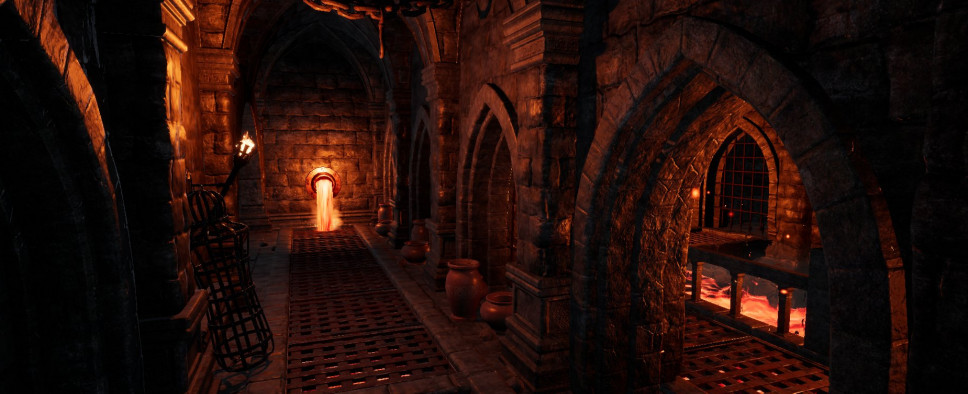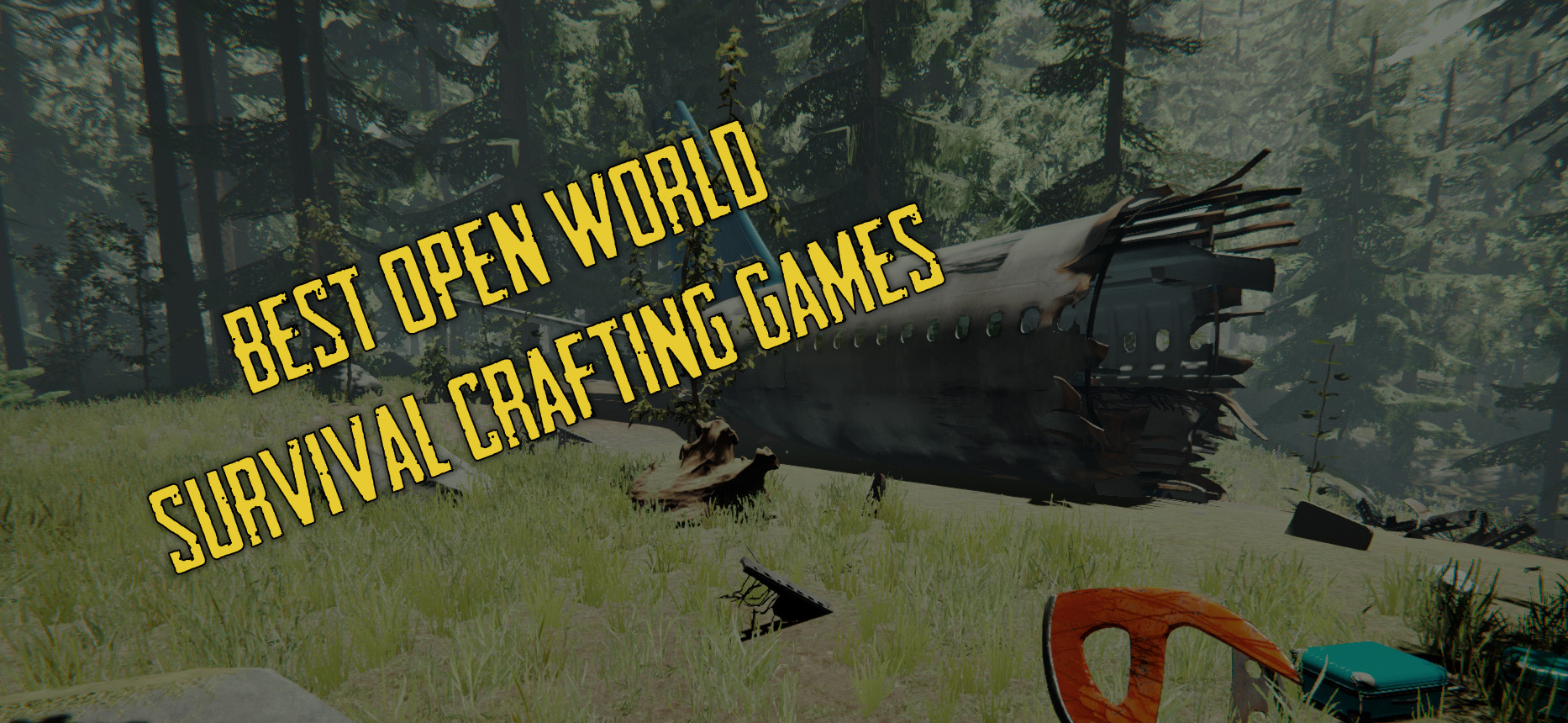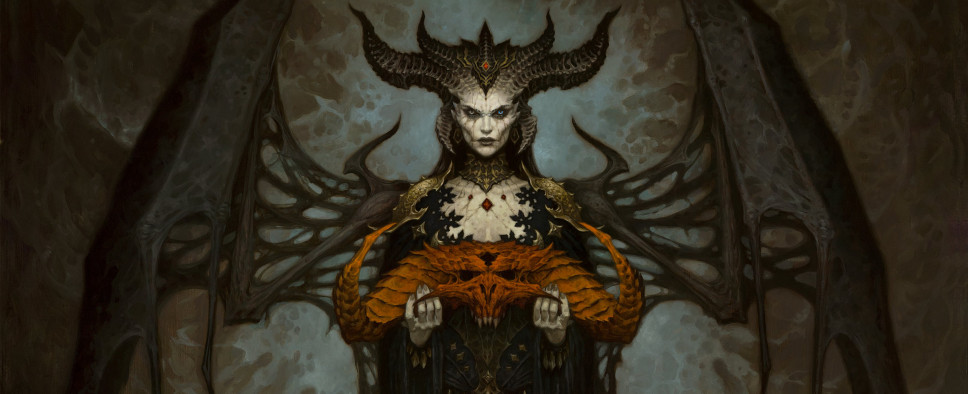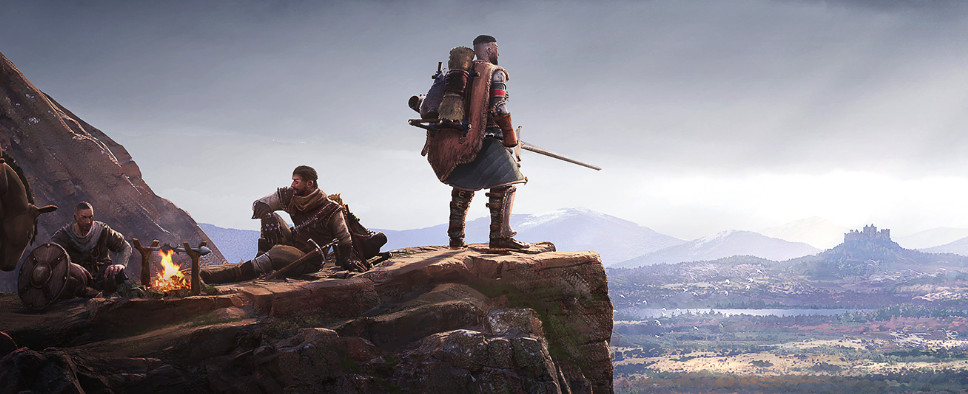Hi, dungeon-crawling fans!
We are one month into the new year and it’s time for yet another update on the project! January was a month filled with brushing up earlier work, tidying up workflows, and generally bringing things into a more presentable state. But let’s go into detail a bit…
Current Progress
After a major refactoring in December I mainly focused on four tasks during January:
~ Asset Migration: This was mostly follow-up work of the refactoring. I ported some assets to the new code base and adjusted a few things. This is ongoing work.
~ Writing: Currently, most of the writing revolves around creating narrative assets. That means, writing dialogue trees, quests, or item descriptions.
~ Detail Pass: I started with the detail pass of the first area in the game. In this phase, the blocked-out level concepts are made into presentable environments, filled with details. Some of these environments will receive further polishing in the lighting pass.
~ Character Design: I also did some character design, modeling, and texturing. The most important part here was to get the workflow right, especially with regard to animation and character modularity. Animation is (still) a tricky topic when it comes to the Blender/UE4 pipeline (even though it has improved drastically over the last few years). Generally speaking, it is recommendable to use the standard UE4 mannequin (respectively its skeleton and extensions thereof) as much as possible – simply due to the fact that it saves you a lot of work when it comes to humanoid characters.
Importing the UE4 mannequin in Blender has been the cause of many headaches for developers. That’s why for animation I mostly use Mr Mannequin Tools – a Blender Plugin that makes this procedure as simple as it gets. Another dimension of the problem, however, is binding custom characters to the standard UE4 skeleton. That is unfortunately a more complex problem, which can be (kinda) solved by playing around with empty vertex groups and surrogate skeletons. Luckily, in humanoid character creation, it is possible to model a character as a group of “empty” clothing meshes. These are then bound to a readily rigged UE4 character via data transfer. Or, to put it into simple words: You can just get a readily rigged and animated standard humanoid UE4 character (which has all the correct vertex groups and bone weights), you “dress that character up” with your clothing meshes and then you just copy the skeleton bindings from the underlying humanoid character via Blender’s data transfer modifier. This approach requires some cleanup, but it’s definitely faster than doing it all manually.
Speaking of clothing meshes: A proper modularization of such meshes into compatible parts provides you with a powerful workflow to quickly create a large variety of different characters. Those of you that backed the project at the “Lysandrian Minister” level or higher, will be provided with a catalog of such character parts to build your very own character. To give you a little idea of what this may look like consider the following image[…]
Backers pick individual parts and will be provided with their final selection. For example, the following character consists of the parts A1, A2, A3, B4, and a color variation of A5[…]
I will have to see how far I can take individual wishes with regard to coloring into account. I may provide backers with fitting color schemes from which they can choose.
Level Design
As promised, this time we will conclude our documentation of Monomyth’s level design principles with a short discussion on room design. To recap: In previous updates, we talked about the layout of a level as well as the design of its individual sections. We mentioned that a section is a collection of rooms containing encounters. I should mention that “room” is a very loose term here and the same principle could be applied to any sort of (largely independent) level subsection, indoor or outdoor.
Generally speaking, rooms contain challenges, or “encounters”, for the player. The design of these encounters is usually feature-driven, meaning the player has to understand the challenge and apply some sort of game mechanic in order to overcome it. The encounters themselves often have an impact on the visual design or the structure of the environment in which they are located. A good example of this is Dark Messiah’s conveniently placed spikes into which you can kick your enemies, whenever you have had enough of them. And here the dilemma of room design starts.
Basically, you want a room to be coherent. The structure must be recognizable and logical. At the same time, there must be some sort of game mechanic involved in a room’s planning to make exploration more than just a nice little stroll. The problem is, that integrating such mechanics may be detrimental to structural coherence. The prime example of this is the iconic narrow pathway with pendulum axes.
Besides a few exceptions, there is no real reason to put something like this anywhere, however, it can be an engaging challenge. So in a way, there is a basic dilemma between what makes sense and what is fun. Often, it is a good idea to resolve the issue via the “Rule of Cool”: Anything that is engaging is preferable to whatever is logical. Of course, in an environment that needs to be plausible and immersive, this can easily be overdone. Luckily, most dungeon crawlers are set in the mythical lands of fantasy adventure and plausibility is only a reasonable “in-lore” explanation away. However, the issue is a bit more delicate for immersive dungeon crawlers. Immersive and emergent gameplay strongly relies on the logical conclusions the players can draw from their “real-world” knowledge. This normally isn’t a big deal, but it serves as a warning to not take things too far. In room and encounter design, any fantastical element, be it floating platforms, levitation elevators, illusory walls, non-euclidean hallways, and so on, must be properly introduced so they become a part of the players’ realm of reason. Only then a meaningful interaction with such elements can happen.
Of course, none of these are novel considerations. Others have thought of these problems before and wrote several books on rooms and encounters, most notably, D&D’s Book of Challenges as well as the Book of Lairs. But really, any dungeon-crawling module, from short adventures to mega-dungeons, can provide detailed insights into the art of room and encounter design.
While reading these books and looking at their numerous interpretations in computer RPGs we intuitively understand some prevalent categories of encounters. The following is a limited overview of such categories, some of which tend to be mixed together. Each one would probably warrant its own little essay.
~ Combat Encounters: The lion’s share of most RPGs’ encounters is combat. There are whole modules dedicated only to detailed combat situations. These are usually part of group-oriented RPGs focused on tactics. Different character classes bring different abilities to combat and provide players with different possibilities to overcome their enemies. Ideally, all combatants have strengths and weaknesses that add up to a zero-sum. Of course, the more complex the characters’ underlying statistics are, the more complex it is to design a well-balanced combat encounter. Action-oriented RPGs usually put less focus on these intricate details. However, there are a few that make use of enemy weaknesses, bringing a strategic element into play. The classic example is skeletons being weak to bludgeoning damage. Certain status effects such as poison, blindness, or petrification are normally less popular in action-oriented games, however, used in moderation, they can add an interesting aspect to combat.
~ Treasures: There are numerous theories on how to create an engaging reward loop. From the field of professional gamification to countless free-to-play titles, thousands of developers have put a lot of thought into this topic. In some cases, developers rely strongly on constant dopamine hits, leading to rather questionable (and more importantly, often unsustainable) results. In classic RPGs, especially in those that are focused on room-by-room exploration, it seems more fitting to distribute rewards by a more irregular pattern. In Psychology, this is referred to as a variable-ratio schedule, where behavior is reinforced through an irregular number of rewards. Imagine, for example, there are rooms in a dungeon that are visited in a certain order. Let’s say on average you would like to reward exploration every four to six rooms. So there is an average expectation for rewards (roughly every five rooms), but there is also an element of uncertainty (+/- one room). That uncertainty is essentially what keeps the engagement going because it introduces an element of tension and relief. Without the uncertainty, exploration would become just another grind. Of course, this is just a very primitive example, and there is also the aspect of balancing the value of individual rewards. The more precious rewards, for instance, could be preceded by riskier encounters.
~ Traps: Speaking of risky situations, treasure can also be an effective bait when it comes to traps. Traps had a bad reputation in game design for a while. I can only assume this goes back to certain notorious dungeons of D&D and how various DMs threw their players to the wolves, giving them nothing to avoid danger. Group-oriented RPGs rely strongly on rogues and their skills to spot traps. However, when a dungeon crawler only features a single character, it is recommendable to at least provide alternative ways to detect traps in time. As a rule of thumb: Every trap needs a (subtle) clue and must be avoidable. Every poisoned well should at least have a greenish glimmer or an oily film, every pressure plate should at least stand out a bit, etc. Some traps are quite obvious. These could be seen as generic obstacles (e.g., pendulum axes). Traps should be deadly but fair. Their main purpose is to keep players on their toes.
~ Secrets: Some people tend to develop a sixth sense for the exact location of secrets within a room. This is not as fantastical as it sounds at first, but rather the result of a learning experience that picks up on minor clues within the environment. Sometimes secrets are spotted through the absence of a different meaningful encounter within a room. Sometimes it is oddities with the architecture, like an alcove in a weird place or a wall where a room should be. Sometimes it is the fact that a certain area is visible but apparently inaccessible. Secrets can be communicated to players in very subtle ways and not everyone will pick up on these. At times not even the level designers realize how much they really give away, while attentive players will see through their secretive shenanigans immediately. If secrets always follow the same principles people will open one hidden door after the other, and the surprising element is lost. It is, therefore, a good idea to come up with different types of secrets and equally distribute them throughout the dungeon.
~ Puzzles: Puzzles come in all shapes and sizes. A detailed discussion of the topic in a short paragraph is pretty much impossible so I will limit myself to my personal preferences. I still consider Riven (aka Myst II) as the gold standard of puzzle games, mainly for two reasons: 1) All puzzles in it are completely logical (i.e., you get all necessary clues and there are no random elements to them) and 2) you cannot brute force them, because they all involve combinations of variables with potentially millions of possibilities. While these two aspects have their advantages within the adventure genre, they can create a problem within immersive dungeon crawling. If the core principle of your game design is to let players figure out their own creative solutions for a challenge, a classic puzzle, which must narrow down everything to one solution, may be out of place. It has to be conceded though that both Arx Fatalis and Ultima Underworld featured such puzzles, some of which could be skipped, however.
~ Friendly Encounters: One of Ultima Underworld’s greatest features was its “civilized” areas. To this day, meeting friendly NPCs within dungeons is rather noteworthy, especially when they are part of a larger group. Regarding a dungeon as a living space shines a different light on dungeon layouts, sections, and room designs. Suddenly the necessities of everyday life come into play and the environment may reflect this in one way or another. Naturally, the less expected such friendly encounters are, the more they stand out. A great example of this is World of Warcraft’s “Grim Guzzler” – a tavern in the middle of a volcanic dungeon, filled with (otherwise hostile) NPCs that are too drunk to care about your presence (that is, until you start a bar fight). I mention this encounter in particular because it highlights how a small deviation in terms of NPC hostility can create an encounter that may stick in people’s minds for decades.
All of these categories can be related to multiple game mechanics. Combat encounters may be avoided by sneaking around them, traps can be triggered by throwing objects at a pressure plate, puzzles can be circumvented altogether if you bring the right item, and so on. With all these things in mind, it is significantly easier to elegantly marry structurally coherent environments with engaging mechanics and end up with a feature-driven design that is fun to play.
And this concludes our little foray into level design. Over the course of the next month, I will likely focus on character design and detail passes. I will keep you posted! Until then!
Best wishes,
Michael





